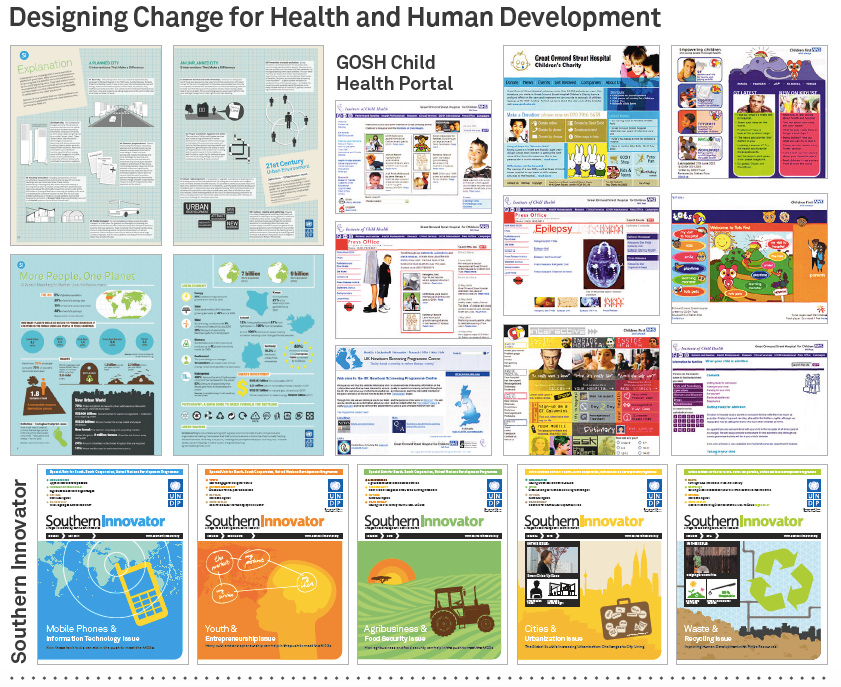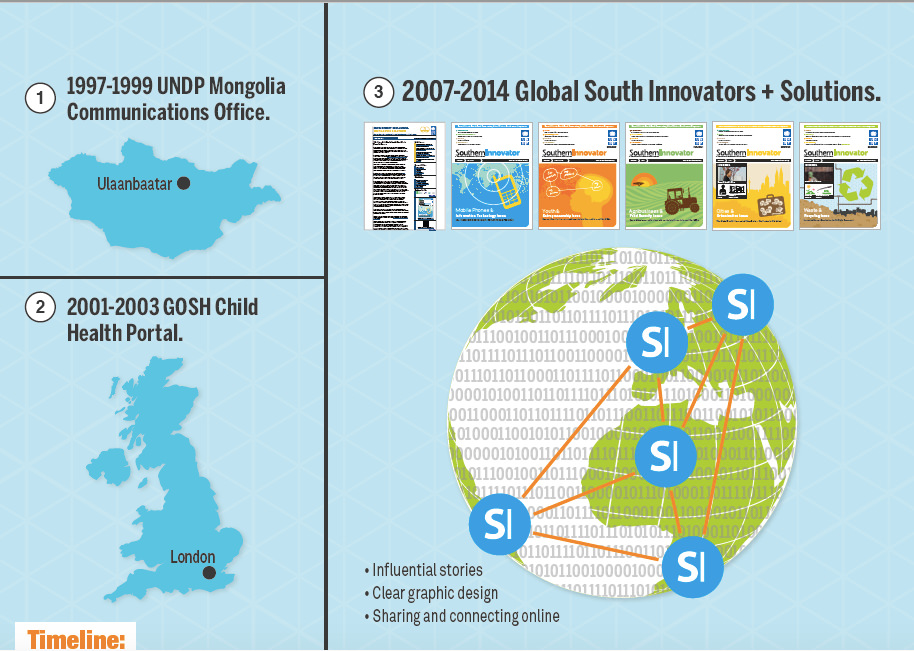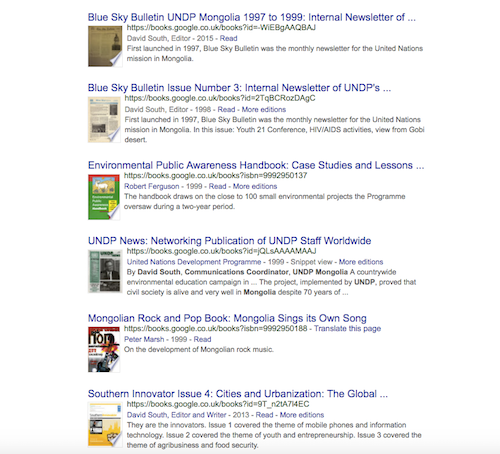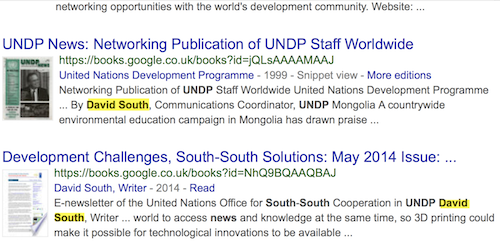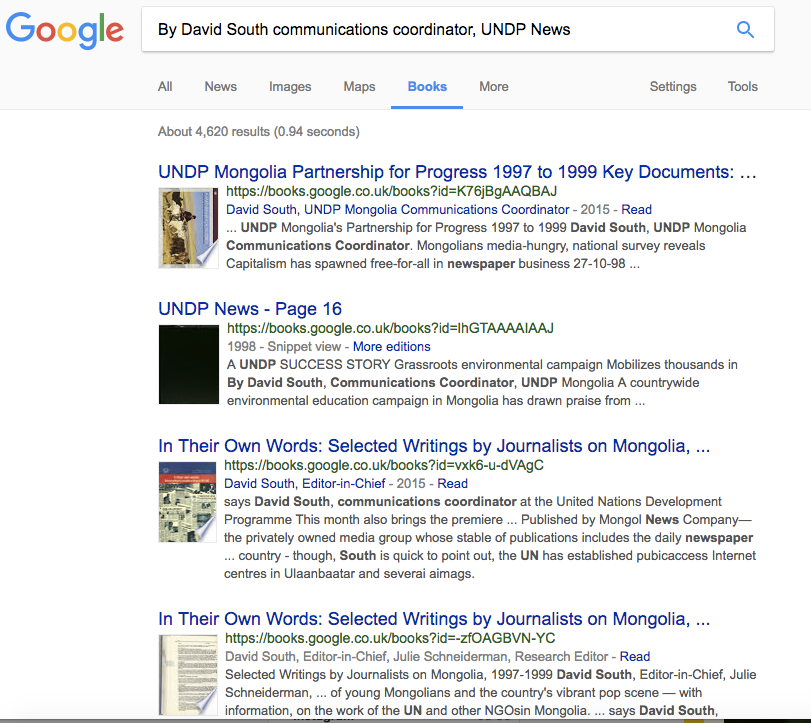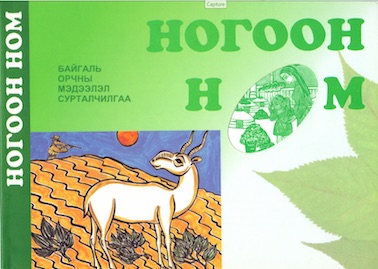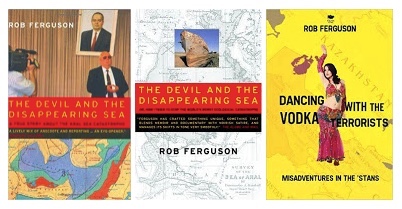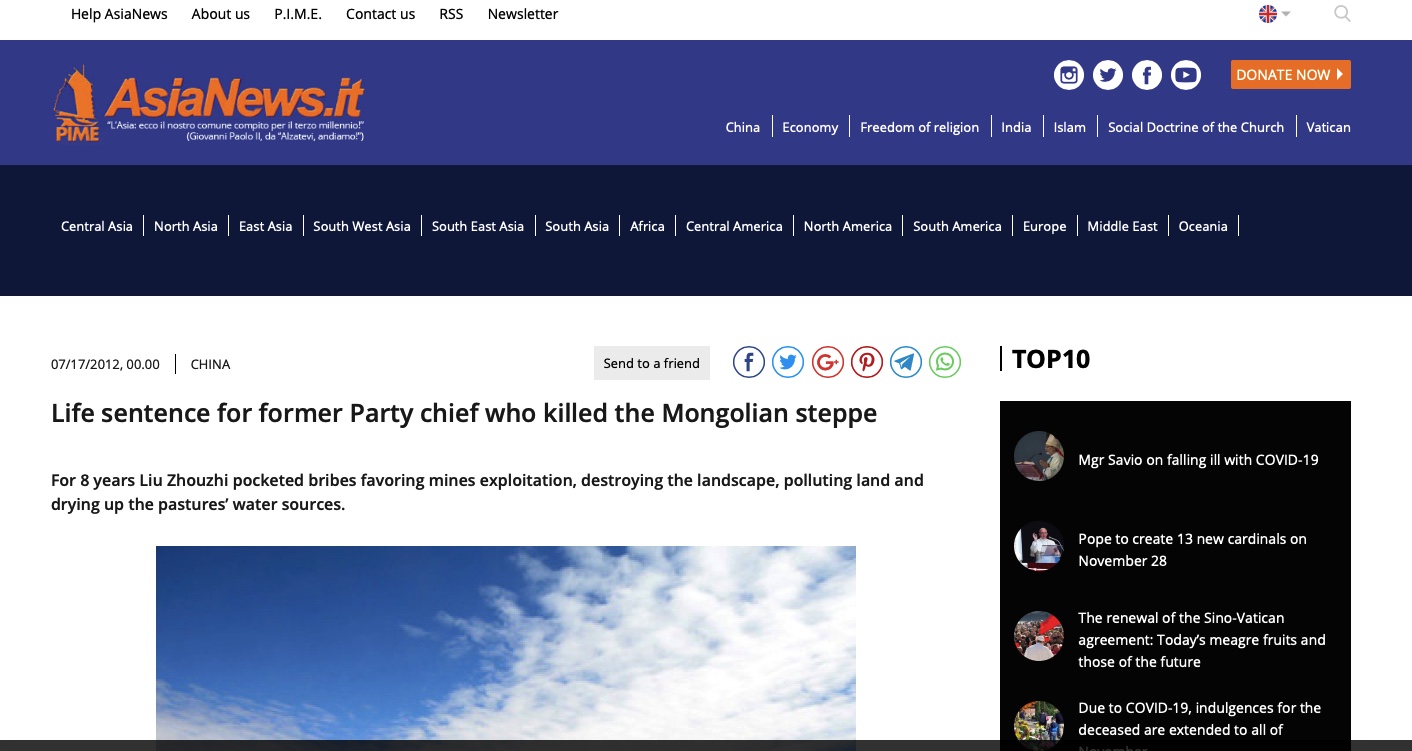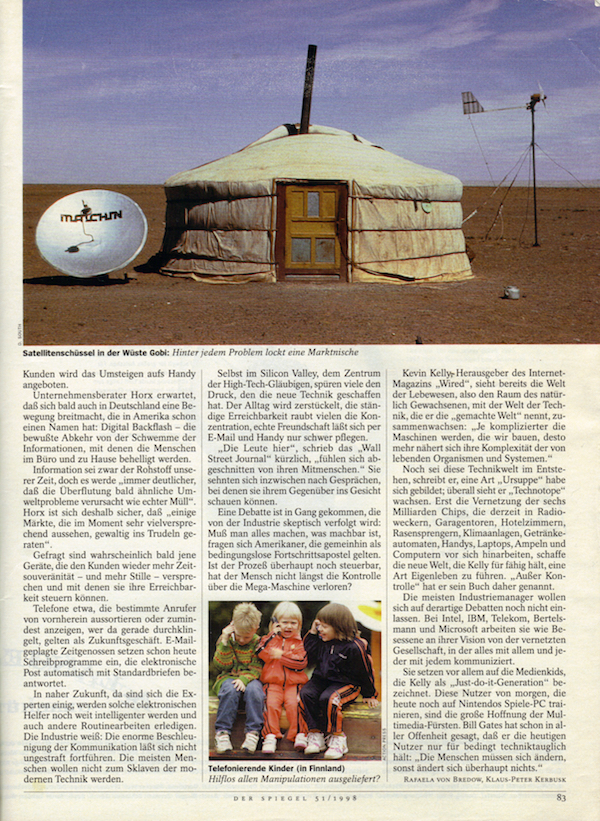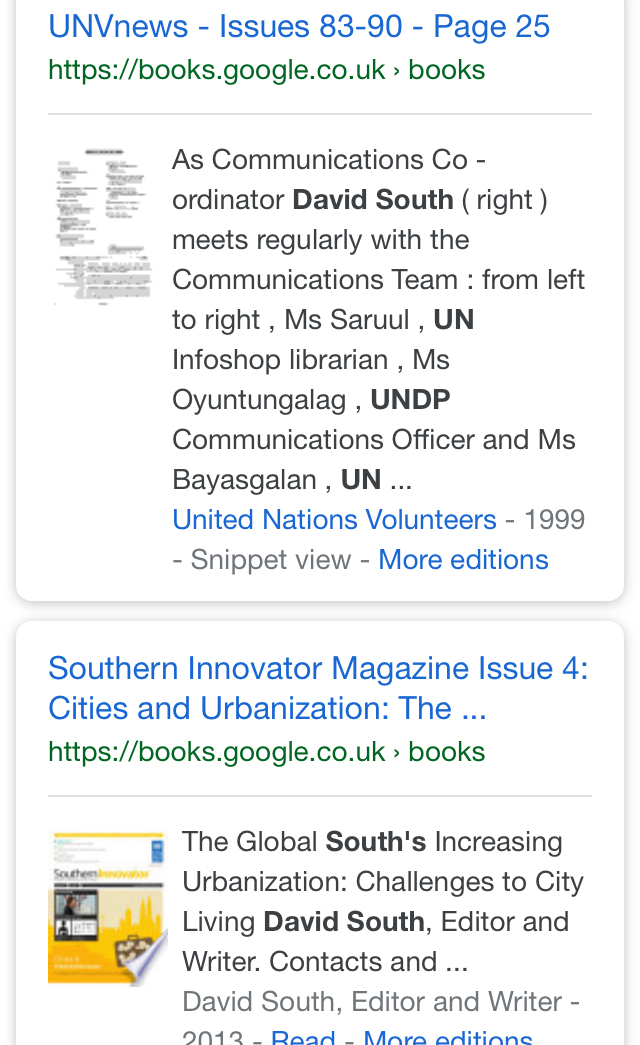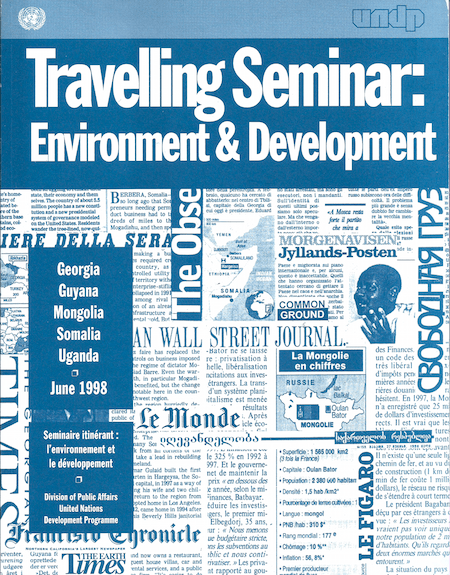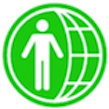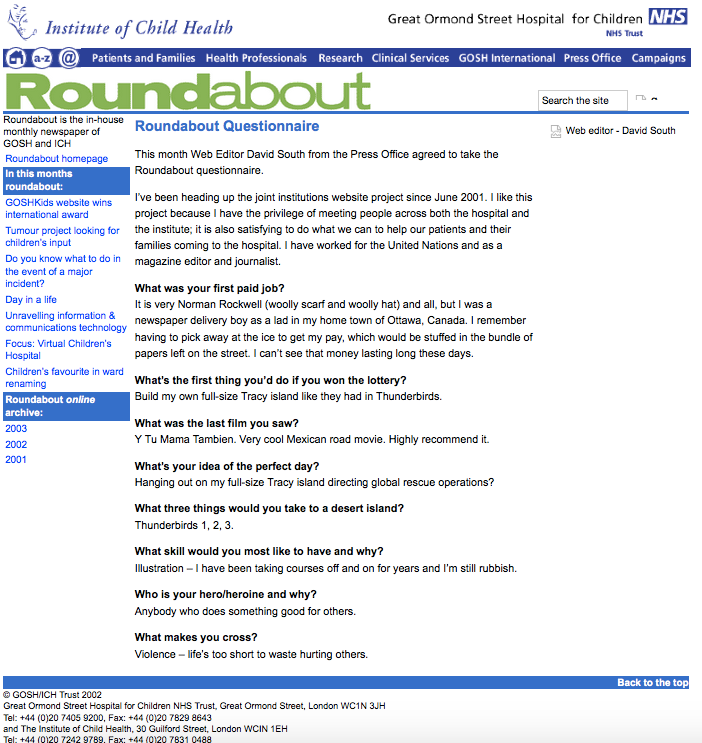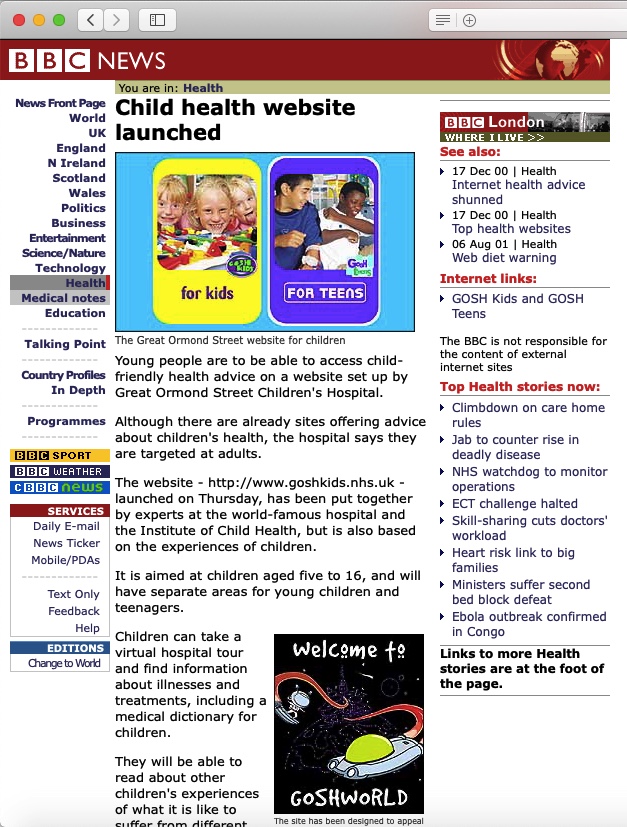He knew what he was talking about: Ferguson and his Mongolian colleagues had spent two years mobilizing Mongolians across the country to take practical steps to address the country's environmental problems as part of the Environmental Public Awareness Programme (EPAP). Few people had as much first-hand knowledge of the country and its environmental challenges than they did.
In its 2007 Needs Assessment, the Government of Mongolia found the EPAP projects "had a wide impact on limiting many environmental problems. Successful projects such as the Dutch/UNDP funded Environmental Awareness Project (EPAP), which was actually a multitude of small pilot projects (most costing less than [US] $5,000 each) which taught local populations easily and efficiently different ways of living and working that are low-impact on the environment."
UNDP News: Networking Publication of UNDP Staff Worldwide April/May 1999
A UNDP Success Story
By David South, Communications Coordinator, UNDP Mongolia
Grassroots environmental campaign mobilizes thousands in Mongolia
A countrywide environmental education campaign in Mongolia has drawn praise from around the world, most especially for its ability to mobilize thousands of people and produce hundreds of advocacy materials.
Robert Ferguson, a UNV Information Specialist from Canada, has just finished a two-year assignment advising on the Environmental Public Awareness Programme. The project, implemented by UNDP, proved that civil society is alive and very well in Mongolia, despite 70 years of Communism and the hardships of transition to a free-market economy.
For the first-time visitor to Mongolia, it is easy to be dazzled by the view: the expansive steppe, the sparse population with a sprinkling of nomadic tents, the enormous herds of sheep, goats and cows. First impressions tend toward the belief that Mongolia is an unspoiled paradise where nomads have roamed for thousands of years. The reality is considerably different. The 600,000-plus capital of Ulaanbaatar, or Red Hero, is densely populated, urban and home to the country’s remaining factories and electrical power plants. In winter, pollution from power plants and coal stoves in the traditional tents, or gers, where half of the city’s population still lives, chokes the population and causes numerous respiratory problems.
While Mongolia has space to spare - the population is 2.4 million, plus 32 million head of livestock, in a territory the size of Western Europe - a long list of threats are taking their toll on this harsh but beautiful country.
“Mongolia’s environment is endangered by a range of problems that are on the brink of exploding,” says Robert Ferguson. “As these problems are not yet out of control, this country is in a very good position for grassroots initiatives that can help communities to realize their environmental problems and understand possible ways to keep them under control …
... On one cold autumn day, Ferguson and his colleagues are visiting a project in the shantytown of Chingeltei in the north of the capital. A majority of Ulannbaatar’s population live in neighbourhoods like this, where the mix of traditional gers, wooden cottages and newly built Mongolian monster homes gives a vivid example of the transition years. The population has exploded as more and more Mongolians seek out their dreams in the capital.
The Environmental Public Awareness Programme, or EPAP, uses small grants of between $1,000 and $2,000 to start awareness projects with local NGOs. After two years, nearly 100 small projects have been implemented - yet the original project document had only proposed 15 projects. According to Ferguson, the project team, which includes Sumiya and Davaasuren, were struck by the wellspring of enthusiasm they were tapping.
… Garbage is strewn liberally on the dusty streets. Inspired by recycling campaigns in his native Canada, Ferguson encouraged local women to start the Blue Bag Project. Local women proudly show off their streets - garbage-free - as they collect pop and beer bottles and animal bones to turn in for cash at the local recycler. This is just one EPAP project that has galvanized grassroots action. Back in the EPAP at the Stalinesque Ministry of Nature and Environment, Ferguson continues …
…. were all weak. What was needed was a means to take the right to public participation and an understanding of these laws to community organizations and let them develop public awareness campaigns that get the information out.”
The Programme has exceeded expectations …
…. “The response we got to our initial call for interested environmental groups was unexpected,” says Ferguson. “NGOs came from nowhere. And they embraced the idea …
… In October last year, EPAP launched the Mongolian Green Book, a pocket-sized environmental awareness handbook for NGOs. More recently Ferguson completed a Handbook on Environmental Public Awareness to share Mongolia’s experiences with others who care about the environment…
… The workshop is an immediate follow-up to the launching of the network through a workshop attended by 12 members in December 1998…
… with such enthusiasm that we pursued more money and nearly doubled the funding for small public awareness problems.”
Note: This is just an excerpt from the story. This issue of
UNDP News featured contributions from UN Secretary-General Kofi Annan, Danny Glover, Nadine Gordimer and Amartya Sen.
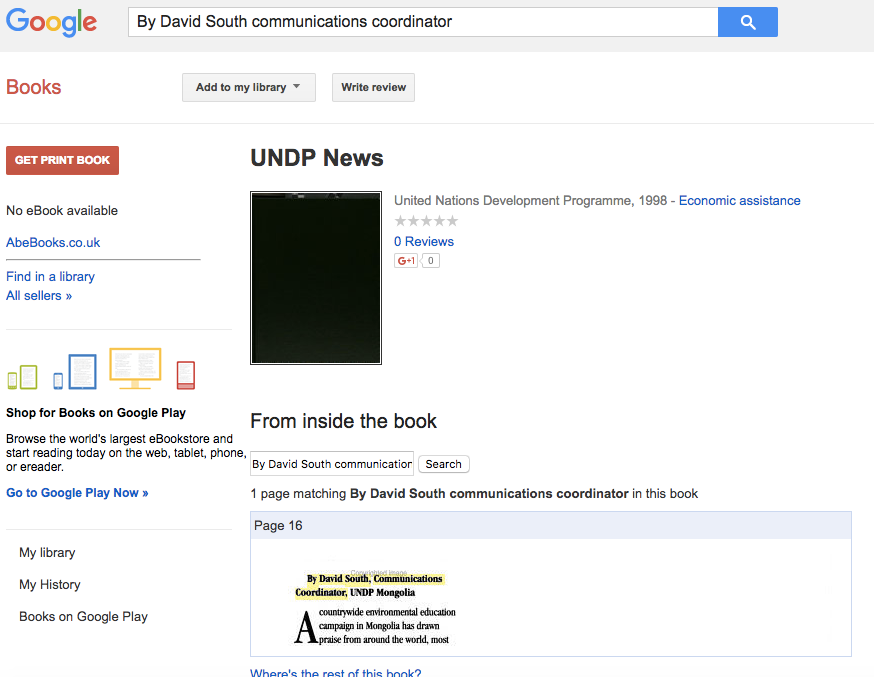 The highly successful EPAP project was profiled in UNDP News in April/May 1999. This issue of UNDP News featured contributions from then UN Secretary-General Kofi Annan, Danny Glover, Nadine Gordimer and Amartya Sen.
The highly successful EPAP project was profiled in UNDP News in April/May 1999. This issue of UNDP News featured contributions from then UN Secretary-General Kofi Annan, Danny Glover, Nadine Gordimer and Amartya Sen.
Update on Sunday, February 25, 2018 at 1:59PM by
 David South
David South
And it hasn't got better, according to UNICEF, as reported in The New York Times:
The story reports on a child health crisis in the country's capital, Ulaanbaatar, because "Many ger households burn coal or even trash to keep warm and the smog they produce has led to a surge in respiratory and heart disease and stoked anger and protests."
And "Pollution levels in Ulaanbaatar" have "become worse than that in cities such as Beijing and New Delhi", according to the UNICEF report.
In 2018, Time published a story titled "Life in the Most Polluted Capital in the World". This consequence of poor development policy stands in stark contrast to just a few years earlier, when the Mongolian President was awarded the 2012 Champions of the Earth award for "leadership that had a positive impact on the environment" and in 2013 was named as Global Host for World Environment Day 2013 because Mongolia "is prioritizing a Green Economy shift across its big economic sectors such as mining and promoting environmental awareness among youth". Awards and meetings are clearly not enough.
Update on Tuesday, August 28, 2018 at 3:35AM by
 David South
David South
The importance of reducing exposure to urban air pollution is being backed up with more studies and evidence. What we have seen in the past 20 years of globalization has been a big push to encourage urbanization and denser urban living conditions. But, unfortunately for human health and well-being, this has not been connected to a strategy to reduce urban air pollution. In fact the opposite has been happening in many cities.
Urban air pollution has increased from various sources, in developed countries from vehicles, in particular those burning diesel fuel, and in developing countries, from not only vehicles but also households burning fuel for heating and cooking.
The tragedy unfolding in Mongolia's capital, Ulaanbaatar, is a classic case of this public health problem. But it is also a crisis in developed world cities, as more vehicles clog streets (many people have been encouraged to buy these vehicles as a boost to the economy during the Global Financial Crisis). Bizarrely, highly polluting diesel engines were marketed as a 'green' solution, in particular in the UK!
Some stories that highlight the harm done, especially to children, can be read below:
A new book to be launched in April 2019 by journalist Beth Gardiner (@Gardiner_Beth), "Choked: The Age of Air Pollution and the Fight for a Cleaner Future" (Granta) (University of Chicago Press), explores today's global air pollution crisis in the world's cities. Gardiner is an environmental journalist who writes for The New York Times, The Guardian and other publications (bethgardiner.com).
 The UK cover for Choked: The Age of Air Pollution and the Fight for a Cleaner Future (Granta, 2019).
The UK cover for Choked: The Age of Air Pollution and the Fight for a Cleaner Future (Granta, 2019).
"An urgent, essential read" Arnold Schwarzenegger
Listed in the Financial Times' "What we'll be reading in 2019"
"A compelling book about a critical subject" Elizabeth Kolbert, Pulitzer Prize-winning author of The Sixth Extinction
"Air pollution kills seven million people every year, causing heart attacks, strokes, cancer, dementia and more. In Choked, Beth Gardiner travels the world to tell the story of this modern-day plague, exposing the political decisions and economic forces that have kept so many of us breathing dirty air."
 Tuesday, July 11, 2017 at 4:04PM
Tuesday, July 11, 2017 at 4:04PM 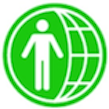
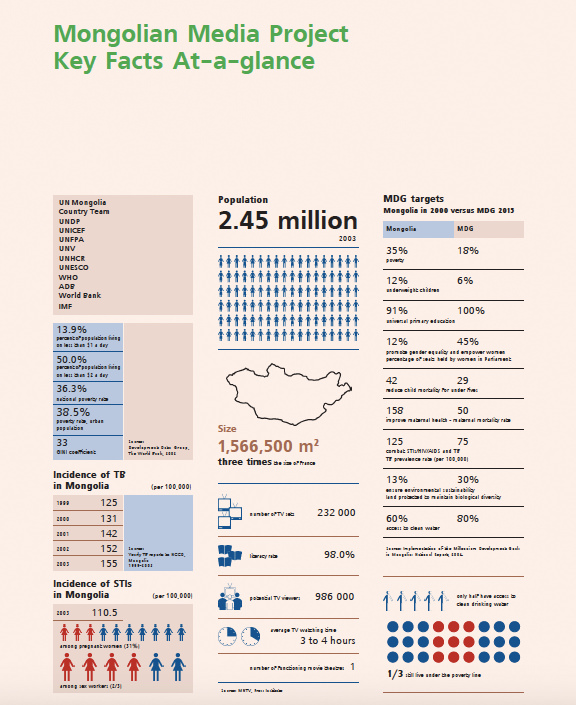 An infographic for UNDP Mongolia's MDGs Media Project in 2005.
An infographic for UNDP Mongolia's MDGs Media Project in 2005. Internet,
Internet,  MDGs,
MDGs,  Mongolia,
Mongolia,  New York,
New York,  SDGs,
SDGs,  USA,
USA,  United Kingdom,
United Kingdom,  global South,
global South,  graphic design,
graphic design,  information technologies,
information technologies,  innovators,
innovators,  solutions in
solutions in  Agenda 2030,
Agenda 2030,  Agenda 21,
Agenda 21,  Child Health,
Child Health,  David South International,
David South International,  Environment,
Environment,  Health,
Health,  Innovator,
Innovator,  International Development,
International Development,  Knowledge Sharing,
Knowledge Sharing,  Media,
Media,  Millennium Development Goals,
Millennium Development Goals,  Mobile Phones and Information Technology,
Mobile Phones and Information Technology,  Project Management,
Project Management,  Publishing,
Publishing,  Senior Partner,
Senior Partner,  Sustainable Development Goals
Sustainable Development Goals 